Clipart tagged: ‘proportional’
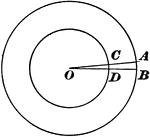
Concentric Circles With Angle of 1 °
"If AOB is an angle of 1 ° on the larger circle, it is also 1 ° on the smaller concentric circle,…

Relationship Between 2 Parallelopipeds With Equal Altitudes
Diagram used to prove the theorem: "The rectangular parallelopipeds which have two dimensions in common…

2 Octagonal Prisms
Illustration of 2 right octagonal prisms with congruent bases, but different heights. The height of…
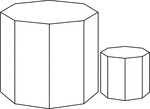
2 Similar Octagonal Prisms
Illustration of 2 Similar right octagonal prisms. The height and length of the edges of the smaller…

Similar Decagonal Prisms
Illustration of 2 similar right decagonal prisms. Both have regular decagons for bases and rectangular…
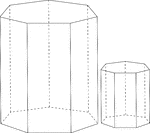
Similar Heptagonal/Septagonal Prisms
Illustration of 2 similar right heptagonal/septagonal prisms. Both have regular heptagons/septagons…

Similar Hexagonal Prisms
Illustration of 2 similar right hexagonal prisms. The height of the prism and length of the side of…

Similar Hexagonal Prisms
Illustration of 2 similar right hexagonal prisms. The height of the prism and length of the side of…

2 Right Pentagonal Pyramids
Illustration of 2 right pentagonal pyramids with hidden edges shown. The pentagonal bases are congruent,…
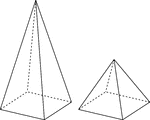
2 Right Rectangular Pyramids
Illustration of 2 right rectangular pyramids with hidden edges shown. The rectangular bases are congruent,…
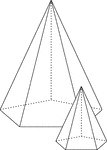
Similar Pentagonal Pyramids
Illustration of 2 similar right pentagonal pyramids with hidden edges shown. The height of the pyramid…
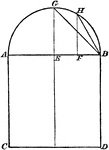
Construction of Proportional Square
Illustration used to construct a square that shall be in proportion to a given square.
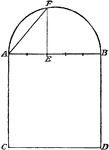
Construction of Proportional Square
Illustration used to construct a square that shall be in proportion to a given square.

Two Proportional Tetrahedrons
Diagram used to prove the theorem: "Two tetrahedrons having a trihedral angle in each equal, are to…